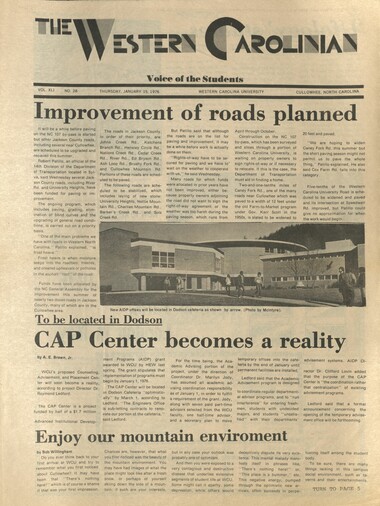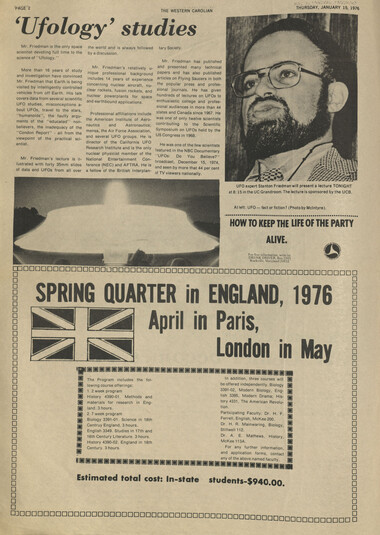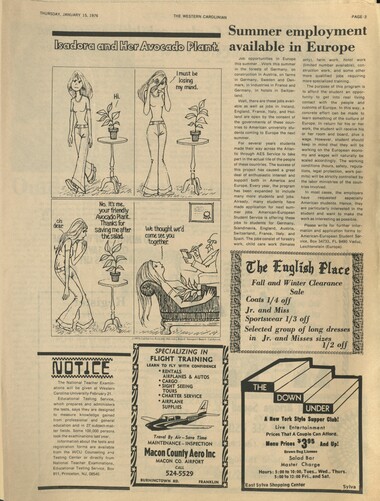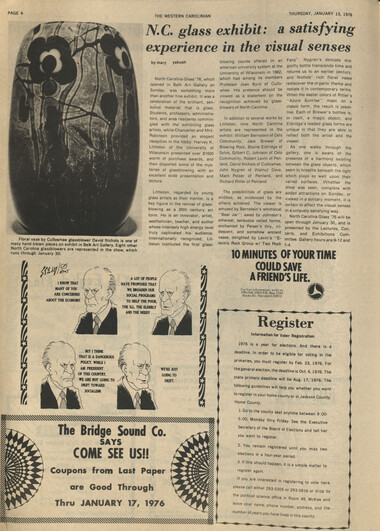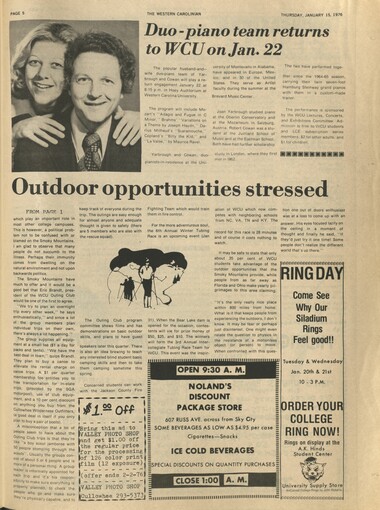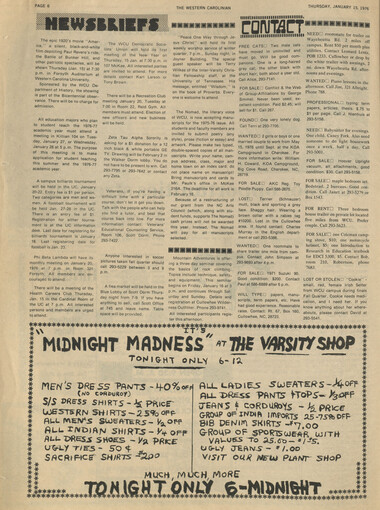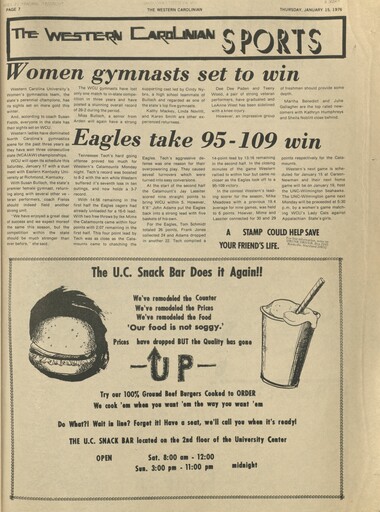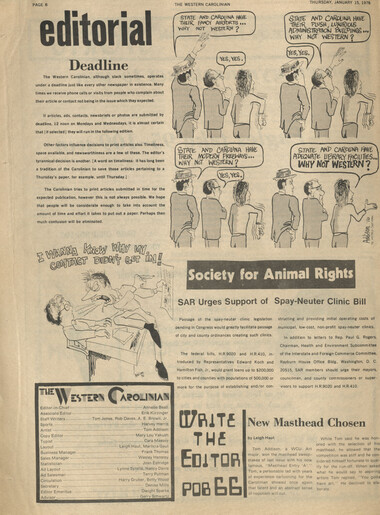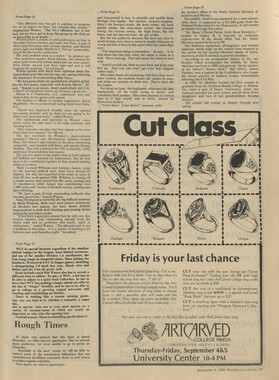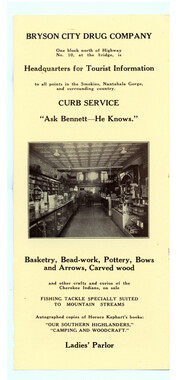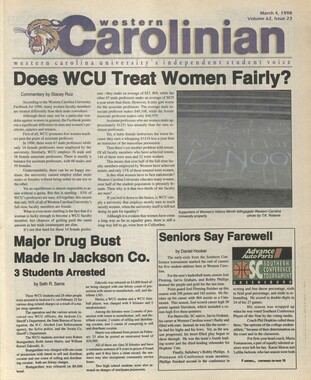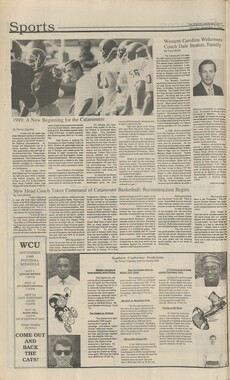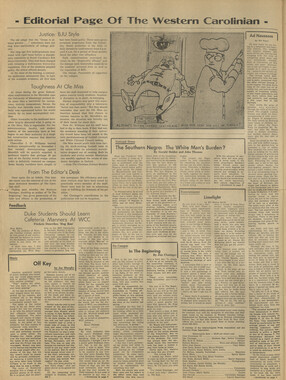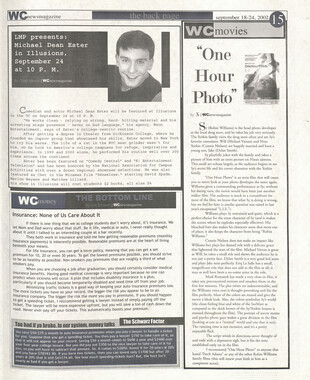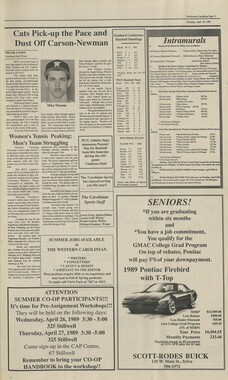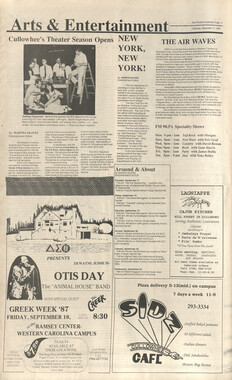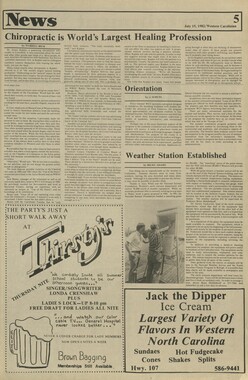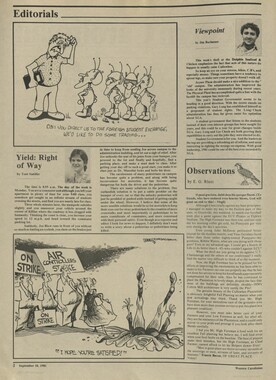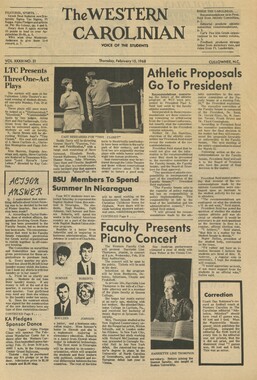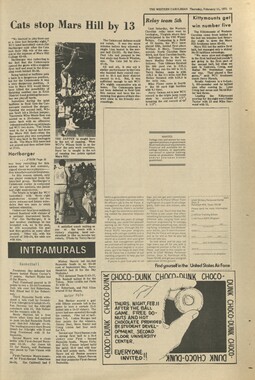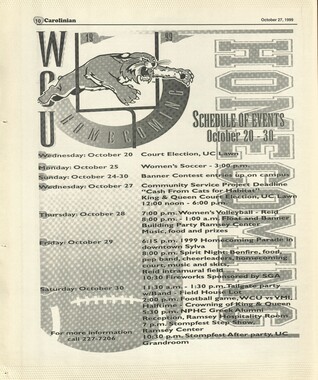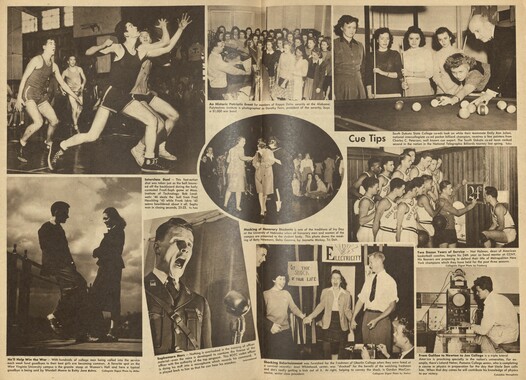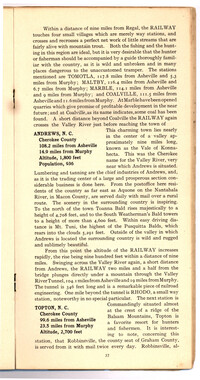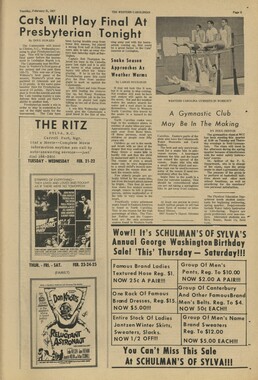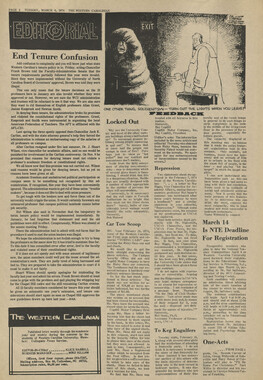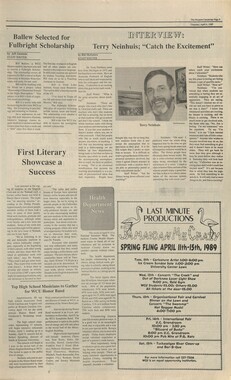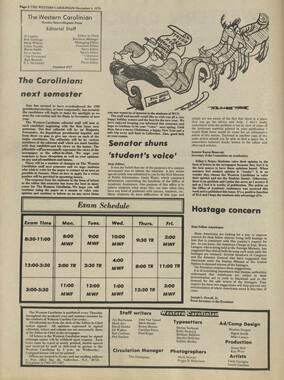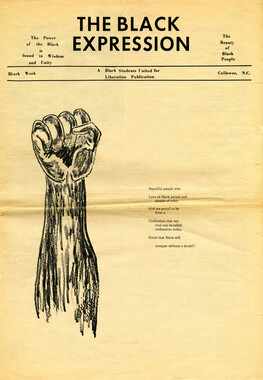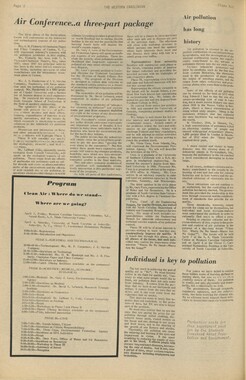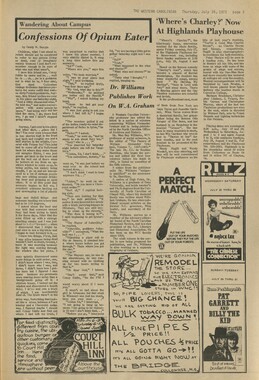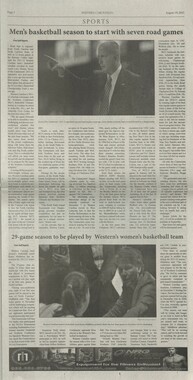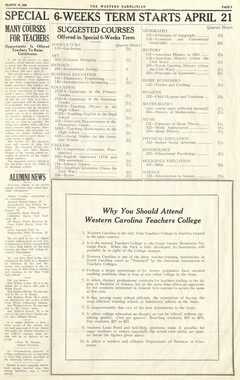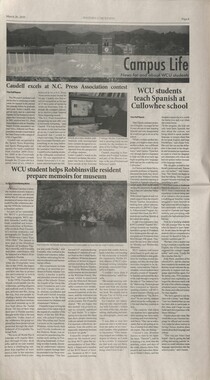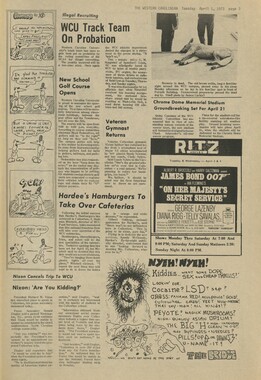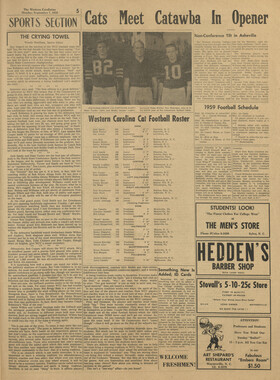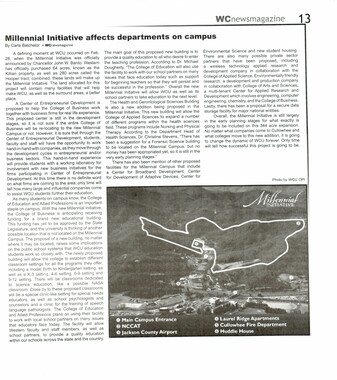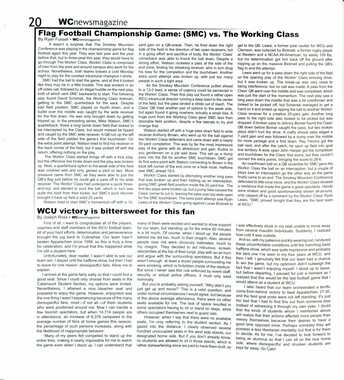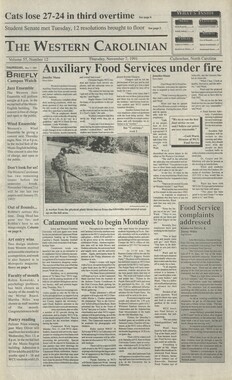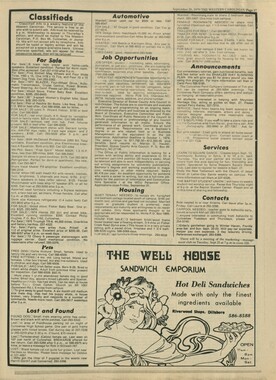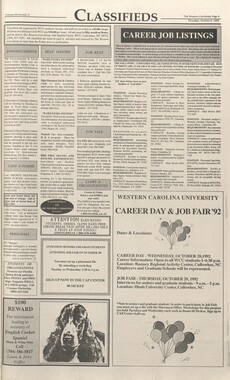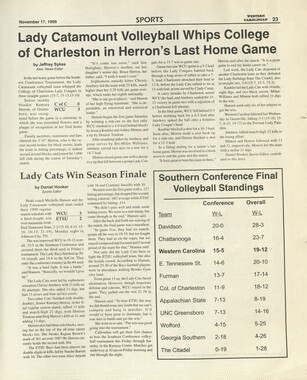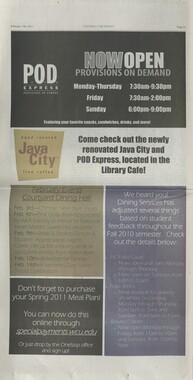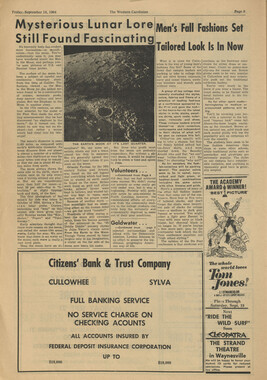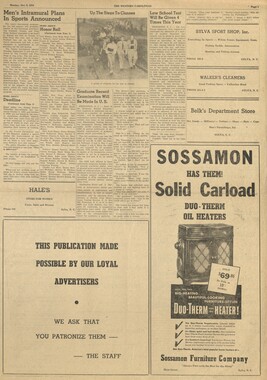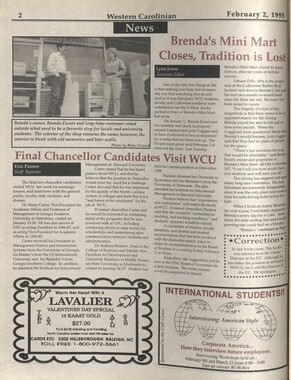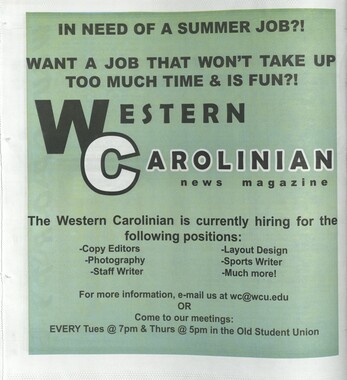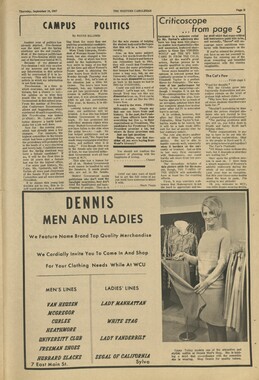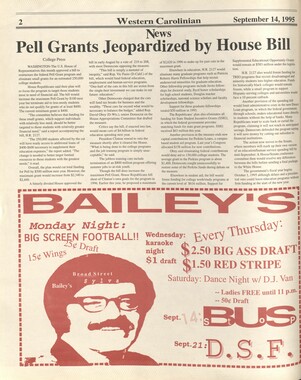Western Carolina University (21)
View all
- Canton Champion Fibre Company (2308)
- Cherokee Traditions (291)
- Civil War in Southern Appalachia (165)
- Craft Revival (1942)
- George Masa Collection (137)
- Great Smoky Mountains - A Park for America (3080)
- Highlights from Western Carolina University (422)
- Horace Kephart (973)
- Journeys Through Jackson (159)
- LGBTQIA+ Archive of Jackson County (89)
- Oral Histories of Western North Carolina (318)
- Picturing Appalachia (6617)
- Stories of Mountain Folk (413)
- Travel Western North Carolina (153)
- Western Carolina University Fine Art Museum Vitreograph Collection (129)
- Western Carolina University Herbarium (92)
- Western Carolina University: Making Memories (738)
- Western Carolina University Publications (2491)
- Western Carolina University Restricted Electronic Theses and Dissertations (146)
- Western North Carolina Regional Maps (71)
- World War II in Southern Appalachia (131)
University of North Carolina Asheville (6)
View all
- Allanstand Cottage Industries (62)
- Appalachian National Park Association (53)
- Bennett, Kelly, 1890-1974 (1463)
- Berry, Walter (76)
- Brasstown Carvers (40)
- Carver, George Washington, 1864?-1943 (26)
- Cathey, Joseph, 1803-1874 (1)
- Champion Fibre Company (233)
- Champion Paper and Fibre Company (297)
- Cherokee Indian Fair Association (16)
- Cherokee Language Program (22)
- Crowe, Amanda (40)
- Edmonston, Thomas Benton, 1842-1907 (7)
- Ensley, A. L. (Abraham Lincoln), 1865-1948 (275)
- Fromer, Irving Rhodes, 1913-1994 (70)
- George Butz (BFS 1907) (46)
- Goodrich, Frances Louisa (120)
- Grant, George Alexander, 1891-1964 (96)
- Heard, Marian Gladys (60)
- Kephart, Calvin, 1883-1969 (15)
- Kephart, Horace, 1862-1931 (313)
- Kephart, Laura, 1862-1954 (67)
- Laney, Gideon Thomas, 1889-1976 (439)
- Masa, George, 1881-1933 (61)
- McElhinney, William Julian, 1896-1953 (44)
- Niggli, Josephina, 1910-1983 (10)
- North Carolina Park Commission (105)
- Osborne, Kezia Stradley (9)
- Owens, Samuel Robert, 1918-1995 (11)
- Penland Weavers and Potters (36)
- Roberts, Vivienne (15)
- Roth, Albert, 1890-1974 (142)
- Schenck, Carl Alwin, 1868-1955 (1)
- Sherrill's Photography Studio (2565)
- Southern Highland Handicraft Guild (127)
- Southern Highlanders, Inc. (71)
- Stalcup, Jesse Bryson (46)
- Stearns, I. K. (213)
- Thompson, James Edward, 1880-1976 (226)
- United States. Indian Arts and Crafts Board (130)
- USFS (683)
- Vance, Zebulon Baird, 1830-1894 (1)
- Weaver, Zebulon, 1872-1948 (58)
- Western Carolina College (230)
- Western Carolina Teachers College (282)
- Western Carolina University (2008)
- Western Carolina University. Mountain Heritage Center (18)
- Whitman, Walt, 1819-1892 (10)
- Wilburn, Hiram Coleman, 1880-1967 (73)
- Williams, Isadora (3)
- Cain, Doreyl Ammons (0)
- Crittenden, Lorraine (0)
- Rhodes, Judy (0)
- Smith, Edward Clark (0)
- Appalachian Region, Southern (3032)
- Asheville (N.C.) (1945)
- Avery County (N.C.) (26)
- Blount County (Tenn.) (195)
- Buncombe County (N.C.) (1680)
- Cherokee County (N.C.) (283)
- Clay County (N.C.) (556)
- Graham County (N.C.) (238)
- Great Smoky Mountains National Park (N.C. and Tenn.) (525)
- Haywood County (N.C.) (3573)
- Henderson County (N.C.) (70)
- Jackson County (N.C.) (4925)
- Knox County (Tenn.) (35)
- Knoxville (Tenn.) (13)
- Lake Santeetlah (N.C.) (10)
- Macon County (N.C.) (421)
- Madison County (N.C.) (216)
- McDowell County (N.C.) (39)
- Mitchell County (N.C.) (135)
- Polk County (N.C.) (35)
- Qualla Boundary (982)
- Rutherford County (N.C.) (78)
- Swain County (N.C.) (2185)
- Transylvania County (N.C.) (270)
- Watauga County (N.C.) (12)
- Waynesville (N.C.) (86)
- Yancey County (N.C.) (72)
- Aerial Photographs (3)
- Aerial Views (60)
- Albums (books) (4)
- Articles (1)
- Artifacts (object Genre) (228)
- Bibliographies (1)
- Biography (general Genre) (2)
- Cards (information Artifacts) (38)
- Clippings (information Artifacts) (192)
- Copybooks (instructional Materials) (3)
- Crafts (art Genres) (622)
- Depictions (visual Works) (21)
- Design Drawings (1)
- Digital Moving Image Formats (2)
- Drawings (visual Works) (185)
- Envelopes (101)
- Exhibitions (events) (1)
- Facsimiles (reproductions) (1)
- Fiction (general Genre) (4)
- Financial Records (12)
- Fliers (printed Matter) (67)
- Glass Plate Negatives (381)
- Guidebooks (2)
- Internegatives (10)
- Interviews (823)
- Land Surveys (102)
- Letters (correspondence) (1045)
- Manuscripts (documents) (618)
- Maps (documents) (177)
- Memorandums (25)
- Minutes (administrative Records) (59)
- Negatives (photographs) (6090)
- Newsletters (1290)
- Newspapers (2)
- Notebooks (8)
- Occupation Currency (1)
- Paintings (visual Works) (1)
- Pen And Ink Drawings (1)
- Periodicals (194)
- Personal Narratives (10)
- Photographs (12977)
- Plans (maps) (1)
- Poetry (6)
- Portraits (4568)
- Postcards (329)
- Programs (documents) (181)
- Publications (documents) (2444)
- Questionnaires (65)
- Relief Prints (26)
- Sayings (literary Genre) (1)
- Scrapbooks (282)
- Sheet Music (2)
- Slides (photographs) (402)
- Songs (musical Compositions) (2)
- Sound Recordings (802)
- Specimens (92)
- Speeches (documents) (18)
- Tintypes (photographs) (8)
- Transcripts (329)
- Text Messages (0)
- A.L. Ensley Collection (275)
- Appalachian Industrial School Records (7)
- Appalachian National Park Association Records (336)
- Axley-Meroney Collection (2)
- Bayard Wootten Photograph Collection (20)
- Bethel Rural Community Organization Collection (7)
- Blumer Collection (5)
- C.W. Slagle Collection (20)
- Canton Area Historical Museum (2110)
- Carlos C. Campbell Collection (462)
- Cataloochee History Project (64)
- Cherokee Studies Collection (4)
- Daisy Dame Photograph Album (5)
- Daniel Boone VI Collection (1)
- Doris Ulmann Photograph Collection (112)
- Elizabeth H. Lasley Collection (1)
- Elizabeth Woolworth Szold Fleharty Collection (4)
- Frank Fry Collection (95)
- George Masa Collection (173)
- Gideon Laney Collection (452)
- Hazel Scarborough Collection (2)
- Hiram C. Wilburn Papers (28)
- Historic Photographs Collection (236)
- Horace Kephart Collection (861)
- Humbard Collection (33)
- Hunter and Weaver Families Collection (1)
- I. D. Blumenthal Collection (4)
- Isadora Williams Collection (4)
- Jesse Bryson Stalcup Collection (47)
- Jim Thompson Collection (224)
- John B. Battle Collection (7)
- John C. Campbell Folk School Records (80)
- John Parris Collection (6)
- Judaculla Rock project (2)
- Kelly Bennett Collection (1482)
- Love Family Papers (11)
- Major Wiley Parris Civil War Letters (3)
- Map Collection (12)
- McFee-Misemer Civil War Letters (34)
- Mountain Heritage Center Collection (4)
- Norburn - Robertson - Thomson Families Collection (44)
- Pauline Hood Collection (7)
- Pre-Guild Collection (2)
- Qualla Arts and Crafts Mutual Collection (12)
- R.A. Romanes Collection (681)
- Rosser H. Taylor Collection (1)
- Samuel Robert Owens Collection (94)
- Sara Madison Collection (144)
- Sherrill Studio Photo Collection (2558)
- Smoky Mountains Hiking Club Collection (616)
- Stories of Mountain Folk - Radio Programs (374)
- The Reporter, Western Carolina University (510)
- Venoy and Elizabeth Reed Collection (16)
- WCU Gender and Sexuality Oral History Project (36)
- WCU Mountain Heritage Center Oral Histories (25)
- WCU Oral History Collection - Mountain People, Mountain Lives (71)
- WCU Students Newspapers Collection (1923)
- Western North Carolina Tomorrow Black Oral History Project (69)
- William Williams Stringfield Collection (2)
- Zebulon Weaver Collection (109)
- African Americans (390)
- Appalachian Trail (35)
- Artisans (521)
- Cherokee art (84)
- Cherokee artists -- North Carolina (10)
- Cherokee language (21)
- Cherokee pottery (101)
- Cherokee women (208)
- Church buildings (190)
- Civilian Conservation Corps (U.S.) (111)
- College student newspapers and periodicals (2012)
- Dams (108)
- Dance (1023)
- Education (222)
- Floods (63)
- Folk music (1015)
- Forced removal, 1813-1903 (2)
- Forest conservation (220)
- Forests and forestry (1198)
- Gender nonconformity (4)
- Great Smoky Mountains National Park (N.C. and Tenn.) (181)
- Hunting (47)
- Landscape photography (25)
- Logging (122)
- Maps (83)
- Mines and mineral resources (9)
- North Carolina -- Maps (18)
- Paper industry (38)
- Postcards (255)
- Pottery (135)
- Railroad trains (72)
- Rural electrification -- North Carolina, Western (3)
- School integration -- Southern States (2)
- Segregation -- North Carolina, Western (5)
- Slavery (5)
- Sports (452)
- Storytelling (243)
- Waterfalls -- Great Smoky Mountains (N.C. and Tenn.) (66)
- Weaving -- Appalachian Region, Southern (280)
- Wood-carving -- Appalachian Region, Southern (328)
- World War, 1939-1945 (173)
Western Carolinian Volume 41 Number 28
Item
Item’s are ‘child’ level descriptions to ‘parent’ objects, (e.g. one page of a whole book).
-
-
Voice of the Students VOL. XLI NO. 28 THURSDAY, JANUARY 15, 1976 WESTERN CAROLINA UNIVERSITY CULLOWHEE. NORTH CAROLINA Improvement of roads planned It will be a while before paving on the NC 107 by-pass is started but other Jackson County roads, including several near Cullowhee, are scheduled to be upgraded and repaved this summer. Robert Patillo, an official of the 14th Division of the Department of Transportation located in Sylva, said Wednesday several Jackson County roads, including River Rd. and University Heights, have been funded for paving or improvement. The ongoing program, which includes paving, grading, elimination of blind curves and the upgrading of general road conditions, is carried out on a priority basis. "One of the main problems we have with roads in Western North Carolina," Patillo explained, "is frost heave." Frost heave is when moisture seeps into the roadbed, freezes, and created upheavals or potholes in the asphalt "roof" of the road. Funds have been allocated by the NC General Assembly for the improvement this summer of nearly two dozen roads in Jackson County, many of which are in the Cullowhee area. The roads in Jackson County, in order of their priority, are: Johns Creek Rd., Ketchens Branch Rd., Hensley Circle Rd., Nations Creek Rd., Cedar Creek Rd., River Rd., Ed Bryson Rd., Ash Loop Rd., Brushy Fork Rd., and Cullowhee Mountain Rd. Portions of these roads are scheduled to be paved. The following roads are scheduled to be stabilized, which includes laying of new stone: University Heights, Nettie Mountain Rd., Charlies Mountain Rd., Barker's Creek Rd., and Sols Creek Rd. But Patillo said that although the roads are on the list for paving and improvement, it may be a while before work is actually done on them. "Rights-of-way have to be secured for paving and we have to' wait on the weather to cooperate with us," he said Wednesday. Many roads for which funds were allocated in prior years have not been improved, either because property owners adjoining the road did not want to sign the right-of-way agreement or the weather was too harsh during the paving season, which runs from April through October. Construction on the NC 107 by-pass, which has been surveyed and slices through a portion of Western Carolina University, is waiting on property owners to sign rights-of-way or if necessary to relocate. If this is the case, the Department of Transportation must aid in finding a home. Two-and-one-tenths miles of Caney Fork Rd., one of the many roads near Cullowhee which was paved to a width of 12 feet under the old Farm-to-Market program under Gov. Kerr Scott in the 1950s, is slated to be widened to 20 feet and paved. "We are hoping to widen Caney Fork Rd. this summer but the short paving season might not permit us to pave the whole thing," Patillo explained. He also said Cox Farm Rd. falls into this category Five-tenths of the Western Carolina University Road is scheduled to be widened and paved and its intersection at Speedwell Rd. improved, but Patillo could give no approximation for when the work would begin. New AIDP offices will be located in Dodson cafeteria as shown by arrow. (Photo by Mclntyre). To be located in Dodson CAP Center becomes a reality by A. E. Brown, Jr. WCU's proposed Counseling, Advisement, and Placement Center will soon become a reality, according to project Director Dr. Raymond Ledford. The CAP Center is a project funded by half of a $1.7 million Advanced Institutional Develop ment Programs (AIDP) grant awarded to WCU by HEW last spring. The grant stipulates that implementation of programs must begin by January 1, 1976. The CAP Center will be located in Dodson Cafeteria "optimistically" by March 1, according to Ledford. "The Engineers Office is sub-letting contracts to renovate our portion ot the cafeteria," said Ledford. For the time being, the Academic Advising portion of the project, under the direction of Coordinator Dr. Marilyn Jody, has assumed all academic advising coordination responsibility as of January 1, in order to fulfill a requirement of the grant. Jody, along with seven paid part-time advisors selected from the WCU faculty, one half-time advisor, and a secretary plan to move temporary offices into the cafeteria by the end of January until permanent facilities are installed. Ledford said that the Academic Advisement program is designed to coordinate regular departmental advisor programs, and to "run interference" for entering freshmen, students with undecided majors, and students "unsatisfied" with their departments' advisement systems. AIDP Director Dr. Clifford Lovin added that the purpose of the CAP Center is "the coordination rather that centralization" of existing advisement programs. Ledford said that a formal announcement concerning the opening of the temporary advisement office will be forthcoming. Enjoy our mountain enviroment by BobWillingham Do you ever think back to your first arrival at WCU and try to remember what you first noticed about Cullowhee? It may have been that "There's nothing here!" which is of course a shame if that was your first impression. Chances are, however, that what you first noticed was the beauty of the mountain environment. You may have had images of what the place might look like after a fresh snow, or perhaps of yourself skiing down the side of a mountain, if such are your interests, but in any case your outlook was probably one of optimism. And then you were exposed to a very contagious and destructive disease that underlies extensive segments of student life at WCU. Some might call it apathy, some depression, while others would deceptively dispute its very existence. This mental malady manifests itself in phrases like, "There's nothing here!" or, "This place is a bummer," etc. This negative energy, pumped through the optimistic new arrivals, often succeeds in perpe tuating itself among the student body. To be sure, there are many things lacking in this campus social environment, such as taverns and their entertainments, TURN TO PAOF. 5
Object
Object’s are ‘parent’ level descriptions to ‘children’ items, (e.g. a book with pages).
-
The Western Carolinian is Western Carolina University's student-run newspaper. The paper was published as the Cullowhee Yodel from 1924 to 1931 before changing its name to The Western Carolinian in 1933.
-
